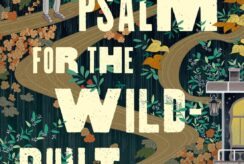By Blake Thomas
I’m sure “classic novel” isn’t something that reminds everybody of happy times. For many it probably sounds sour, as if they’re the Brussels sprouts of the high school experience. But, like Brussels sprouts, these books are a healthy thing to have in life once in a while. They have important things to say, after all.
Something Old, Something New
Syrian American Author Zeyn Joukadar’s The Map of Salt and Stars tells the parallel stories of Nour and Rawiya, two girls who are tasked with traveling the same path across territories in the Middle East. The twist? The two stories take place hundreds of years apart. The latter is a myth, a young woman who disguised herself as a man in order to explore the world and to fight for peace amidst a territorial conflict. The former is living through active history, being forced to travel as a refugee in the aftermath of her home’s destruction amidst a war on terror.
The very first page of this book is a map of the Mediterranean. But, there’s a chance you’d have to look twice before realizing what it was, as the entire map puts South at the top. For me, that was a brand new experience. That little change adds a whole new perspective right off the bat, and shows that one worldview might be totally different compared to another, down to the way they make their maps. What those maps represent might be different, too. To some, they’re ways home. To others, they’re a form of art. And to this story’s main character, they’re invitations to explore the most important parts of the page: the ones that aren’t charted yet. After all, why would you chart a map just to find home? With that very first page, we’re taken from our seats and brought directly into Nour’s world.
Deeper Meanings
And the nuance doesn’t end there. Like many good classics, this book is packed with even more symbolism. The U.S., the Middle East, the shape poems that mark the transition from one territory to the next, her family members, her friends, her maps, and more all take on a new meaning for this story. Nour herself adds a whole new layer. As a synesthete, she is able to associate certain sounds and smells and tastes with colors. It’s her worldview, her personal map. Anger can become “so red it’s almost white,” and every smell has a consistent, unique hue. Along with including a very detailed and well-researched representation of this condition, Joukhadar manages to create an entire collection of symbols with it through vivid images that come up in the story on almost every other page. It’s elaborate, but reads so smoothly that the reader almost instinctively sees the deeper meaning.
And those nuanced meanings between the maps and the colors and the stories she’s heard all serve to help motivate Nour as she travels across a war-torn territory. Inspired by her father’s story of the disguised traveler Rawiya, she keeps going. Rawiya is her moral conscience, a symbol that explains her love of maps, and her drive to keep moving. And as Nour explores the difficult and complex world she lives in, so do we.
Final Thoughts
This book is truly timeless, but at the same time packs an extra valuable message to serve the timeframe it was published. It reflects other classics in that way. Think of the way that To Kill A Mockingbird speaks on topics that were just as important as they are today, but were new and unexplored at the same time. This book does that exact same thing, but tells it through what comes off as a more youthful and fresh voice. Something that’s very much needed for a future classic. If The Map of Salt and Stars makes its way into schools soon, it will be all the better for the students who could benefit from hearing such a deeply resonating story.
